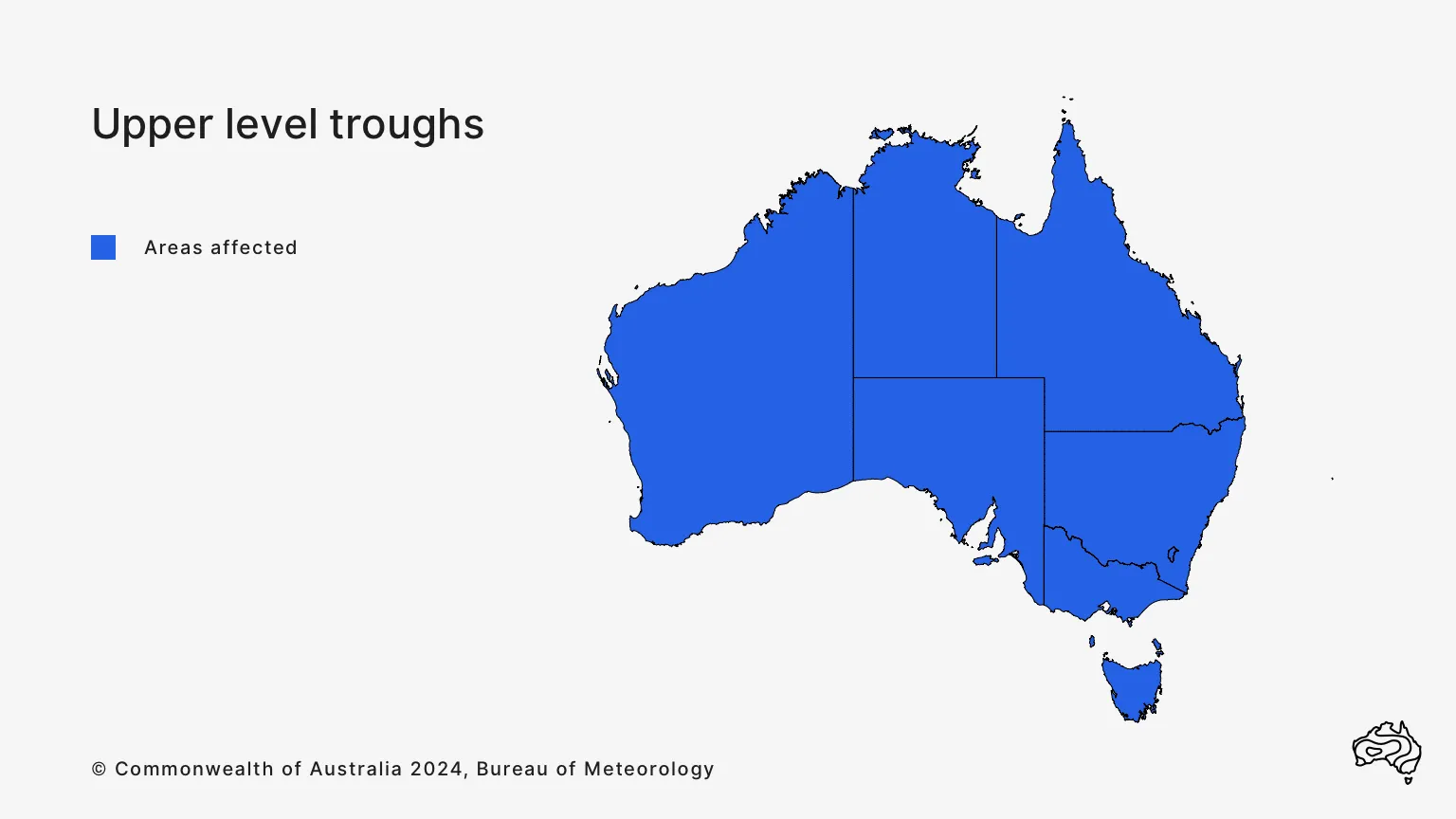What is an upper level trough?
An upper level trough is an area of low pressure in the upper levels of the atmosphere.
These troughs are typically 5–10 km above Earth's surface. This means they do not appear on surface level weather charts.
Timing and duration of upper level troughs
Upper level troughs can happen at any time. They generally:
- move from west to east
- last from a few days to a couple of weeks.

Upper level troughs can affect any part of Australia at any time of year. They generally last from a few days to a couple of weeks.
How upper level troughs affect Australia
Upper level troughs can help cloudbands to form. This can lead to widespread rainfall near and east of the trough. They can enhance rainfall in any region of Australia.
These troughs can also help surface level features develop. For example, cold fronts and other frontal systems. An upper level trough in a favourable position may result in a cut-off low. This in turn enhances rainfall over the affected region.
Weather and climate factors related to upper level troughs
Cut-off lows
Cut-off lows are low pressure systems that break away from a main belt of low pressure south of Australia. They enhance rainfall in southern Australia. Learn about cut-off lows.
Frontal systems
Frontal systems bring rainfall to southern Australia. Cold fronts are the most common frontal systems to affect Australia but we can experience warm fronts too. Learn about frontal systems.
